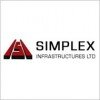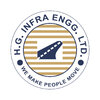Filter interviews by
Ashoka Buildcon Interview Questions and Answers
48 Interview questions
Routine and preventive maintenance for highways ensures safety, longevity, and efficiency of road infrastructure.
Regular inspections to identify wear and tear, such as potholes or cracks.
Scheduled cleaning of drainage systems to prevent flooding.
Routine pavement sealing to extend the lifespan of asphalt surfaces.
Timely repainting of road markings and signage for visibility.
Vegetation control to maintain clear sigh...
Yes, I have extensive experience with planning tools like MSP and Primavera for project management and scheduling.
Proficient in Microsoft Project (MSP) for creating Gantt charts and tracking project progress.
Utilized Primavera P6 for managing large-scale construction projects, ensuring resource allocation and timeline adherence.
Experience in integrating MSP with other tools for enhanced reporting and collaboration...
The project life cycle outlines the stages a project goes through from initiation to closure.
1. Initiation: Define the project scope and objectives. Example: A project charter is created.
2. Planning: Develop a detailed project plan, including timelines and resources. Example: Gantt charts are often used.
3. Execution: Implement the project plan and monitor progress. Example: Team members complete assigned tasks.
4. ...
Embankment is a raised bank or wall built to carry a road or to hold back water.
Embankment is a raised structure made of earth or other materials to support a road or railway.
Earthwork process involves moving, processing, and placing soil or rock to create embankments, excavations, or other earth structures.
Embankments are commonly used in road construction to elevate the road above the surrounding terrain.
Earthwo...
RCC drain is a reinforced concrete drain used for efficient drainage of rainwater or wastewater.
RCC drain is made of reinforced concrete to provide strength and durability.
It is used to efficiently channel rainwater or wastewater away from roads, buildings, or other structures.
RCC drains come in various shapes and sizes depending on the specific drainage requirements.
These drains are commonly used in urban areas t...
PQC laying stands for Pavement Quality Concrete laying, which is the final layer of concrete pavement on roads.
PQC laying is the process of laying the final layer of concrete pavement on roads.
It is done after the base and sub-base layers have been prepared and compacted.
PQC laying ensures a smooth and durable surface for vehicles to travel on.
Proper curing of PQC is essential to prevent cracks and ensure longevit...
Kerb painting and road marking are techniques used to designate specific areas on roads for various purposes.
Kerb painting involves painting the edges of the road, usually in a specific color, to indicate parking restrictions, loading zones, or pedestrian crossings.
Road marking includes painting lines, symbols, and signs on the road surface to guide traffic, indicate lanes, show pedestrian crossings, and warn of h...
Kerb laying is the process of installing and positioning curbs along the edges of roads or pavements.
Kerb laying involves setting out the alignment and levels for the curbs.
The curbs are then placed and fixed in position using concrete or other suitable materials.
Kerb laying helps define the edges of roads, provide structural support, and prevent vehicles from driving off the road.
Properly laid curbs enhance the o...
NOTE-5S is a system used for organizing and categorizing inventory in a store.
NOTE-5S is a method of organizing inventory based on five principles: Sort, Set in order, Shine, Standardize, and Sustain.
Sort involves removing unnecessary items from inventory to improve efficiency.
Set in order involves arranging items in a logical and efficient manner.
Shine involves keeping the inventory area clean and organized.
Stand...
A store is a physical or virtual location where goods or services are kept for sale or distribution.
Stores can be retail stores, online stores, warehouses, etc.
They typically hold inventory of products for customers to purchase.
Stores can also refer to a place where items are stored for future use or distribution.
Ashoka Buildcon Interview Experiences
72 interviews found
(5 Questions)
- Q1. What is embackment & Earthwork process
- Ans.
Embankment is a raised bank or wall built to carry a road or to hold back water.
Embankment is a raised structure made of earth or other materials to support a road or railway.
Earthwork process involves moving, processing, and placing soil or rock to create embankments, excavations, or other earth structures.
Embankments are commonly used in road construction to elevate the road above the surrounding terrain.
Earthwork pr...
- Q2. What is PQC laying
- Ans.
PQC laying stands for Pavement Quality Concrete laying, which is the final layer of concrete pavement on roads.
PQC laying is the process of laying the final layer of concrete pavement on roads.
It is done after the base and sub-base layers have been prepared and compacted.
PQC laying ensures a smooth and durable surface for vehicles to travel on.
Proper curing of PQC is essential to prevent cracks and ensure longevity.
Exa...
- Q3. What is RCC drain
- Ans.
RCC drain is a reinforced concrete drain used for efficient drainage of rainwater or wastewater.
RCC drain is made of reinforced concrete to provide strength and durability.
It is used to efficiently channel rainwater or wastewater away from roads, buildings, or other structures.
RCC drains come in various shapes and sizes depending on the specific drainage requirements.
These drains are commonly used in urban areas to pre...
- Q4. What is Kerb laying
- Ans.
Kerb laying is the process of installing and positioning curbs along the edges of roads or pavements.
Kerb laying involves setting out the alignment and levels for the curbs.
The curbs are then placed and fixed in position using concrete or other suitable materials.
Kerb laying helps define the edges of roads, provide structural support, and prevent vehicles from driving off the road.
Properly laid curbs enhance the overal...
- Q5. What isKerb painting and road marking
- Ans.
Kerb painting and road marking are techniques used to designate specific areas on roads for various purposes.
Kerb painting involves painting the edges of the road, usually in a specific color, to indicate parking restrictions, loading zones, or pedestrian crossings.
Road marking includes painting lines, symbols, and signs on the road surface to guide traffic, indicate lanes, show pedestrian crossings, and warn of hazard...
Interview Preparation Tips
I appeared for an interview before Jun 2024, where I was asked the following questions.
- Q1. What steps do you take to investigate incidents or accidents in the workplace?
- Ans.
I follow a systematic approach to investigate workplace incidents, ensuring thorough analysis and preventive measures.
1. Immediate Response: Secure the area to prevent further incidents and provide first aid if necessary.
2. Gather Evidence: Collect physical evidence, photographs, and witness statements to understand the incident context.
3. Conduct Interviews: Speak with involved personnel and witnesses to gather detail...
- Q2. Describe your approach to conducting risk assessments.
- Ans.
I conduct thorough risk assessments by identifying hazards, evaluating risks, and implementing control measures to ensure safety.
Identify hazards: Conduct site inspections and review incident reports to pinpoint potential risks.
Evaluate risks: Use qualitative and quantitative methods to assess the likelihood and impact of identified hazards.
Prioritize risks: Rank risks based on severity and likelihood to focus on the m...
- Q3. What strategies do you employ to ensure compliance with HSE regulations?
- Ans.
I implement comprehensive strategies including training, audits, and communication to ensure HSE compliance.
Conduct regular training sessions for employees on HSE regulations and best practices.
Implement a robust auditing system to identify compliance gaps; for example, quarterly safety audits.
Establish clear communication channels for reporting hazards and incidents, ensuring prompt action.
Utilize technology for monit...
Deputy General Manager Interview Questions & Answers
posted on 7 Aug 2024
I applied via Recruitment Consulltant and was interviewed in Jul 2024. There was 1 interview round.
(5 Questions)
- Q1. Experience Type & Job Responsibility
- Q2. Regarding Education & Previous Experience
- Q3. Technical Experience & Knowledge of Past Organization
- Q4. Salary Negotiations
- Q5. Finalization of CTC with respect to Posting Order location
- Ans.
Finalizing CTC involves considering various factors like cost of living, market rates, company budget, and employee qualifications.
Consider cost of living in the location of posting
Compare market rates for similar positions in the area
Ensure the CTC fits within the company's budget constraints
Take into account the qualifications and experience of the employee
Negotiate if necessary to reach a mutually beneficial CTC
Interview Preparation Tips
(2 Questions)
- Q1. Tell about yourself
- Ans.
I am a motivated and detail-oriented individual with a background in business consulting and a passion for problem-solving.
Background in business consulting
Strong problem-solving skills
Motivated and detail-oriented
Excellent communication skills
Experience working in cross-functional teams
- Q2. Tell something About your project
- Ans.
Developed a project management tool for tracking tasks and deadlines
Implemented user-friendly interface for easy task management
Integrated calendar feature for scheduling deadlines
Generated reports for tracking project progress
Utilized agile methodology for project development
(2 Questions)
- Q1. Transformers ratings
- Q2. Basic questions about distri
Interview Preparation Tips
(2 Questions)
- Q1. About yourself and your qualification
- Q2. Salary and past experience
(3 Questions)
- Q1. Depends on your field. In which you are expert
- Q2. Commonly it's depends on post applied
- Q3. Management skills
I appeared for an interview in Jun 2024.
(2 Questions)
- Q1. Related to contracts and management core
- Q2. What is your understanding of FIDIC, specifically regarding compliance, delay events, and the relevant articles in the contract? Additionally, what types of contracts have you previously handled?
- Ans.
FIDIC is a standard form of contract used in the construction industry, covering compliance, delay events, and relevant articles.
FIDIC stands for International Federation of Consulting Engineers
It provides a framework for construction contracts, including compliance requirements and procedures for handling delay events
Key articles in FIDIC contracts include those related to variations, claims, and dispute resolution
I h...
Interview Preparation Tips
I applied via Walk-in and was interviewed in Jun 2024. There were 2 interview rounds.
(2 Questions)
- Q1. Introduce yourself
- Q2. How fluent are you in english
(2 Questions)
- Q1. Treatment of depreciation
- Ans.
Depreciation is the allocation of the cost of a tangible asset over its useful life.
Depreciation is a non-cash expense that reduces the value of an asset over time.
Common methods of depreciation include straight-line, double-declining balance, and units of production.
Depreciation is important for accurately reflecting the true value of assets on the balance sheet.
It is crucial for financial reporting and tax purposes.
D...
- Q2. Treatment of govt grant
- Ans.
Government grants are typically recognized as income when they are received, but may need to be recognized as deferred income and recognized over time if they are intended to fund specific future expenses.
Government grants are usually recognized as income when received
However, if the grant is intended to fund specific future expenses, it may need to be recognized as deferred income and recognized over time
The treatment...
Interview Preparation Tips
I appeared for an interview in Feb 2025, where I was asked the following questions.
- Q1. Have you experience if planning tools like MSP & Primavera?
- Ans.
Yes, I have extensive experience with planning tools like MSP and Primavera for project management and scheduling.
Proficient in Microsoft Project (MSP) for creating Gantt charts and tracking project progress.
Utilized Primavera P6 for managing large-scale construction projects, ensuring resource allocation and timeline adherence.
Experience in integrating MSP with other tools for enhanced reporting and collaboration.
Impl...
- Q2. What's project life cycle
- Ans.
The project life cycle outlines the stages a project goes through from initiation to closure.
1. Initiation: Define the project scope and objectives. Example: A project charter is created.
2. Planning: Develop a detailed project plan, including timelines and resources. Example: Gantt charts are often used.
3. Execution: Implement the project plan and monitor progress. Example: Team members complete assigned tasks.
4. Monit...
I appeared for an interview in May 2025, where I was asked the following questions.
- Q1. Software knowledge
- Q2. Material knowledge
I appeared for an interview in Dec 2024, where I was asked the following questions.
- Q1. Simple Question Regarding Our Work
- Q2. Some Technical questions Also Asked by Someone
- Q3. Phase Difference Between Conductor
- Ans.
Phase difference in conductors refers to the angular difference in voltage or current waveforms in AC circuits.
Phase difference is measured in degrees or radians, indicating how much one waveform leads or lags another.
In AC circuits, if two conductors carry currents that are out of phase, it can lead to power loss and inefficiency.
For example, in a three-phase system, the phase difference between each conductor is typi...
- Q4. Talk to about yourself
- Ans.
I am a seasoned Senior Engineer with over 10 years of experience in software development and a passion for innovative solutions.
Expert in full-stack development, having led projects using technologies like React, Node.js, and Python.
Successfully managed a team of 5 engineers to deliver a complex e-commerce platform ahead of schedule.
Strong background in Agile methodologies, facilitating daily stand-ups and sprint plann...
Interview Preparation Tips
Top trending discussions






Ashoka Buildcon Interview FAQs
Some of the top questions asked at the Ashoka Buildcon interview -
The duration of Ashoka Buildcon interview process can vary, but typically it takes about less than 2 weeks to complete.
Tell us how to improve this page.
Ashoka Buildcon Interviews By Designations
- Ashoka Buildcon Senior Engineer Interview Questions
- Ashoka Buildcon Highway Engineer Interview Questions
- Ashoka Buildcon Civil Structural Engineer Interview Questions
- Ashoka Buildcon Safety Officer Interview Questions
- Ashoka Buildcon Electrical Engineer Interview Questions
- Ashoka Buildcon Senior Project Executive Interview Questions
- Ashoka Buildcon Junior Officer Interview Questions
- Ashoka Buildcon Civil Site Engineer Interview Questions
- Show more
Interview Questions for Popular Designations
- Senior Engineer Interview Questions
- Analyst Interview Questions
- Intern Interview Questions
- Business Analyst Interview Questions
- Associate Software Engineer Interview Questions
- Java Developer Interview Questions
- System Engineer Interview Questions
- Senior Software Engineer Interview Questions
- Show more
Overall Interview Experience Rating
based on 93 interview experiences
Difficulty level
Duration
Interview Questions from Similar Companies
Ashoka Buildcon Reviews and Ratings
based on 1.3k reviews
Rating in categories
|
Engineer
192
salaries
| ₹2.2 L/yr - ₹5.5 L/yr |
|
Senior Engineer
154
salaries
| ₹3 L/yr - ₹10 L/yr |
|
Electrical Engineer
91
salaries
| ₹2.4 L/yr - ₹6 L/yr |
|
Store Keeper
77
salaries
| ₹1.8 L/yr - ₹4.2 L/yr |
|
Junior Engineer
74
salaries
| ₹1.8 L/yr - ₹4.2 L/yr |

L&T Construction

Simplex Infrastructures

ITD Cementation India

AtkinsRealis
- Home >
- Interviews >
- Ashoka Buildcon Interview Questions













